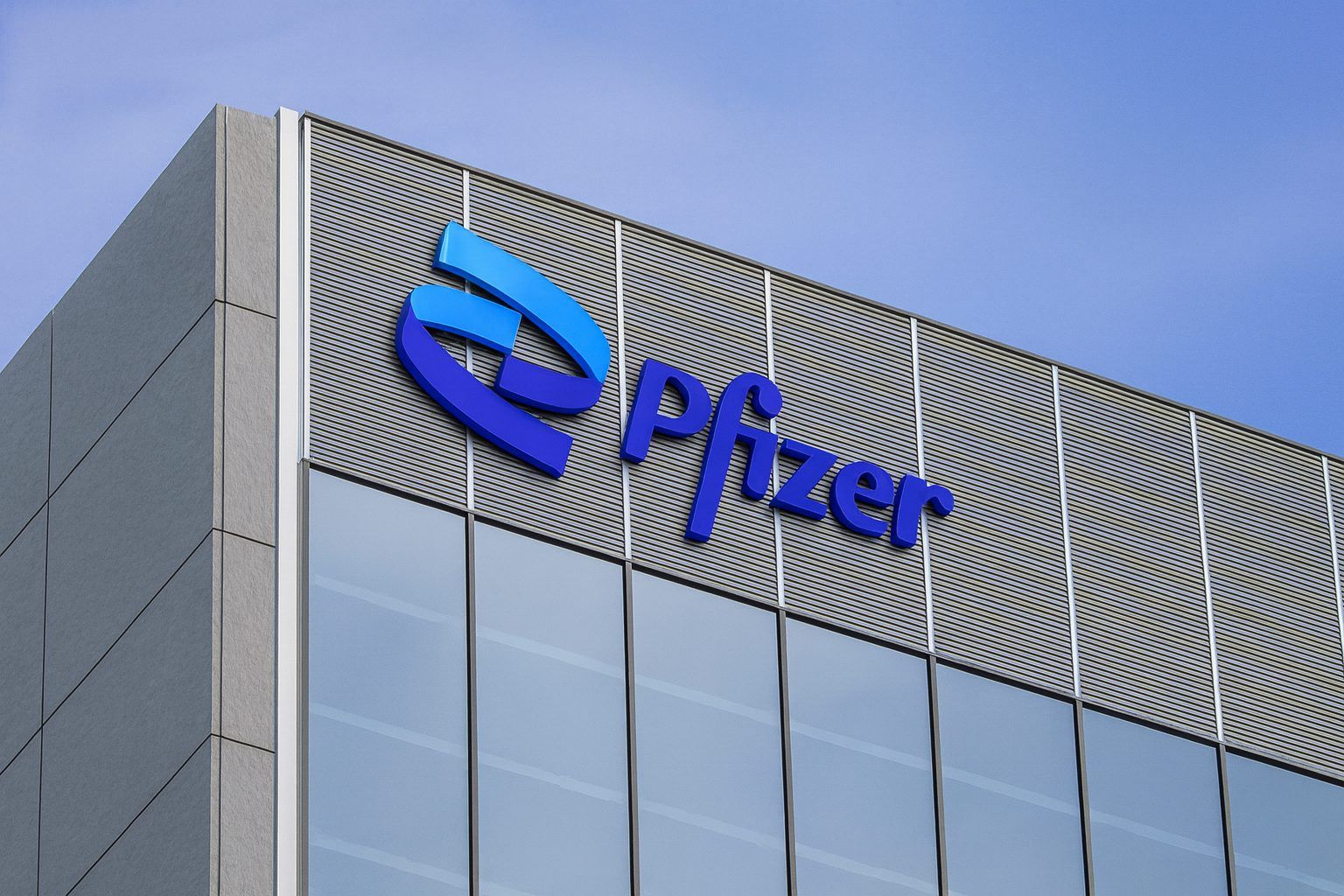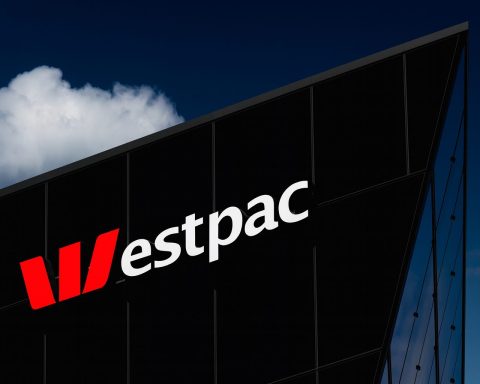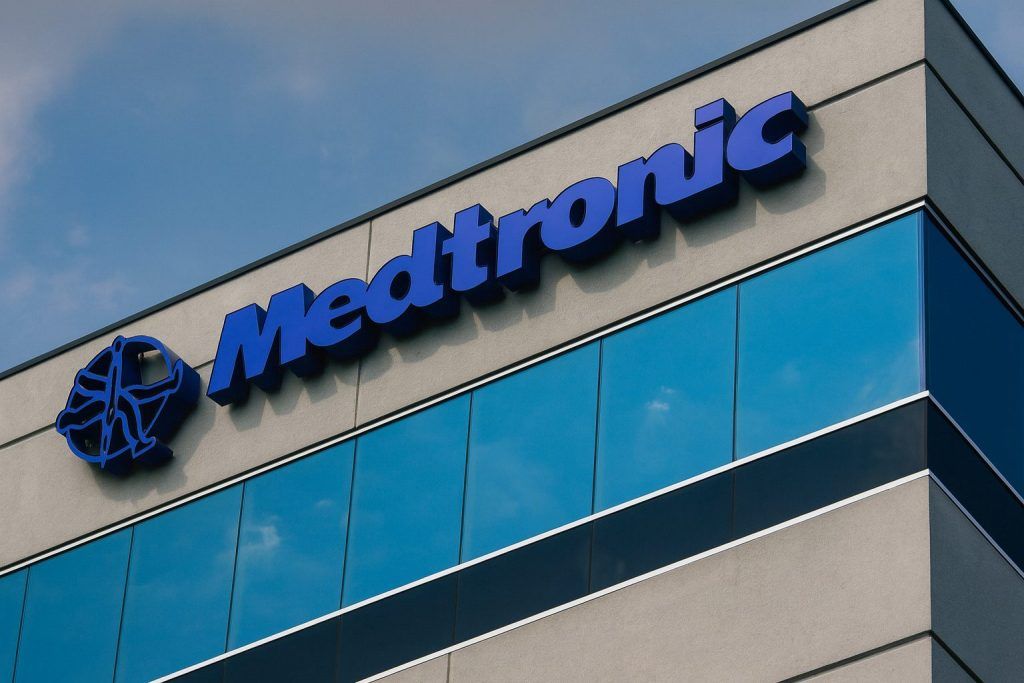Pfizer Inc. (NYSE: PFE) heads into Wednesday, November 26, 2025 with its share price sitting just under the top of its recent trading range and a narrative that looks very different from the COVID‑era boom and bust.
After climbing almost 2% on Tuesday to about $25.72 per share, Pfizer now offers a dividend yield near 6.7%, trades in a 52‑week range of $20.92–$27.69, and carries an average 12‑month analyst target of around $28.56, implying roughly 10–12% upside from current levels. [1]
At the same time, fresh coverage on November 25–26 is spotlighting three big themes for PFE stock:
- Unusual options activity concentrated around the $25 strike. [2]
- A major push into obesity drugs via the completed Metsera acquisition. [3]
- A new FDA approval for PADCEV® plus Keytruda® in bladder cancer, strengthening Pfizer’s oncology story. [4]
Below is a structured look at where Pfizer stock stands today and what the latest news means for investors.
Pfizer stock price snapshot heading into November 26, 2025
As of Tuesday’s close:
- Last close: ~$25.72
- Daily move: +$0.50 (+1.98%) vs. the prior close of $25.22
- Day’s range: $25.36 – $25.97
- 52‑week range: $20.92 – $27.69
- Market cap: about $146 billion
- Dividend: $1.72 per share annually (yield ≈ 6.7%)
- Forward P/E: ~8.6, based on analyst estimates
- Analyst consensus: “Buy” with an average target of ~$28.56. [5]
Total return for 2025 so far is modestly positive (around 3–4% YTD), lagging the broader S&P 500 but stabilizing after a rough 2023–2024 drawdown. [6]
In other words, Pfizer now trades:
- Near the middle‑to‑upper end of its 52‑week range,
- At a value‑style earnings multiple,
- With a high income payout that continues to attract dividend‑focused investors.
Today’s fresh angle: Options surge and post‑PADCEV re‑rating
Heavy options flow around the $25 strike
New reporting today highlights unusually active options trading in PFE. In the latest session, across the listed options market, volume reached roughly 62.3 million contracts, with Pfizer among the notable names. [7]
For Pfizer specifically, options traders opened:
- About 43,000 weekly puts at a $25.01 strike expiring on November 26, and
- An equal number of January 2026 calls and puts at the same $25.01 strike. [8]
That pattern looks a lot like large, hedged or volatility‑focused structures (for example, straddles or more complex spreads) built exactly around the current share price area. It doesn’t give a pure bullish or bearish verdict, but it does say this:
Big money is positioning for PFE to move, not to sit still around $25.
For traders watching PFE today, follow‑through in options volume and how the stock behaves near $25–26 will be a key intraday focus.
New valuation takes after PADCEV approval
Fresh analysis from Simply Wall St (published within the last day) argues that FDA approval of the PADCEV + Keytruda combination is an important catalyst for Pfizer’s long‑term value, particularly as management leans harder into oncology and away from pandemic‑era COVID revenues. [9]
Under one widely followed valuation model, the site pegs Pfizer’s “fair value” around $29.08 per share, roughly 14% above the recent trading price near $25, suggesting the stock may still be undervalued despite its recent bounce. [10]
Another recent stock‑focused recap notes the same three drivers of Tuesday’s move:
- The Metsera obesity acquisition,
- PADCEV + Keytruda approval, and
- Surging options activity around the $25 strike. TechStock²+1
The overall takeaway from the latest commentary: sentiment is shifting from “COVID hangover” toward “transition story with optionality” as Pfizer leans into oncology and metabolic disease.
Metsera deal: Pfizer’s big bet to re‑enter the obesity race
On November 13, 2025, Pfizer completed its acquisition of Metsera, a clinical‑stage obesity‑drug developer, paying $65.60 per share in cash plus a contingent value right of up to $20.65 per share—up to $86.25 per share in total. The deal values Metsera at roughly $7–10 billion, depending on milestone payouts. [11]
Key points from company statements and independent coverage:
- The acquisition brings once‑monthly GLP‑1‑based obesity candidates, including a lead asset that has shown up to ~14% weight loss in trials, putting it in the conversation with current leaders from Novo Nordisk and Eli Lilly. [12]
- Metsera strengthens Pfizer’s Internal Medicine portfolio and is explicitly positioned as a way to re‑enter the booming obesity and cardiometabolic market, which analysts see reaching around $150 billion annually by the end of the decade. [13]
- Shareholders of Metsera approved the deal after a high‑profile bidding war with Novo Nordisk, which had raised its own offer before ultimately walking away. [14]
For PFE stock, the Metsera move matters because:
- It adds a genuine growth option just as several big drugs head toward patent expiry (more on that below).
- It reinforces the narrative that Pfizer is willing to deploy COVID windfall cash and proceeds from asset sales—like its reduced stake in BioNTech—to rebuild a long‑term growth engine. [15]
The flip side: Metsera is still in clinical development, so the obesity thesis won’t materially change earnings for several years, leaving execution and trial risk firmly on the table.
Oncology momentum: PADCEV + Keytruda gets a “game‑changing” bladder cancer approval
On November 21, 2025, the U.S. FDA approved PADCEV® (enfortumab vedotin‑ejfv) in combination with Keytruda® (pembrolizumab) as a perioperative treatment for adults with muscle‑invasive bladder cancer who are ineligible for cisplatin chemotherapy. [16]
Highlights from the approval and associated data:
- The combo is the first and only perioperative regimen shown to significantly improve survival over surgery alone in this patient group. [17]
- In the Phase 3 EV‑303 / KEYNOTE‑905 study, PADCEV + Keytruda achieved:
- ~60% reduction in the risk of disease recurrence, progression or death, and
- ~50% reduction in the risk of death vs. surgery alone. [18]
- Industry coverage has described the approval as “practice‑changing” and a potential new standard of care in eligible bladder cancer patients. [19]
For Pfizer, which co‑develops PADCEV with Astellas and splits economics, this adds:
- Another meaningful oncology revenue stream, and
- A high‑profile clinical win that underpins the bullish case centered on cancer and other non‑COVID franchises. [20]
Recent investor commentary explicitly asks whether this approval should change how investors value Pfizer, with some analysts arguing it strengthens the company’s post‑COVID transformation story and partially offsets upcoming patent headwinds. [21]
Q3 2025 earnings: COVID down, non‑COVID up, guidance raised
Pfizer’s third‑quarter 2025 results, released earlier this month, set the fundamental backdrop for recent trading:
- Total revenue: ~$16.7 billion, down about 7% operationally year‑over‑year. [22]
- Non‑COVID portfolio: up about 4% operationally, driven by oncology, vaccines (excluding COVID), and certain specialty products. [23]
- Reported EPS: $0.62
- Adjusted EPS: $0.87 for the quarter. [24]
Crucially, management:
- Reaffirmed full‑year 2025 revenue guidance of $61–$64 billion, and
- Raised and narrowed full‑year adjusted EPS guidance to $3.00–$3.15, up from $2.90–$3.10 previously. [25]
That combination—sliding COVID revenue but growing non‑COVID lines and higher earnings guidance—has been a key driver of the more constructive tone in recent PFE coverage. [26]
Dividend, valuation and what Wall Street is saying
A near‑7% yield that’s under scrutiny
With PFE trading around $25–26, the annual dividend of $1.72 per share translates into a yield just under 7%, well above the S&P 500 average. [27]
A recent analysis from The Motley Fool asks whether Pfizer’s 6.9%‑ish dividend is still safe, noting that: [28]
- The payout is generous relative to current earnings,
- Management has reaffirmed its commitment to the dividend, but
- Investors should keep an eye on how earnings hold up as COVID revenues fade and patent expirations begin to bite.
As long as Pfizer delivers on cost cuts and new product ramp‑ups, many income investors view the dividend as attractive compensation for waiting, but the yield is high enough that the risk of a future cut can’t be ignored if execution slips.
Valuation: value stock with growth options
On most traditional metrics, Pfizer looks cheap vs. its own history and vs. peers:
- Forward P/E around 8–9x and a trailing P/E under 15x. [29]
- Analyst consensus rating: “Buy”, with a target near $28.5—about 10–12% above current levels. [30]
- Independent valuation work (e.g., Simply Wall St) suggests fair value around $29, implying mid‑teens percentage upside if long‑term assumptions hold. [31]
Technical and sentiment‑focused services have also turned more positive recently, with at least one outlet calling PFE a short‑term “buy candidate” after a string of higher closes and a stabilization in the mid‑$20s. TechStock²+2TipRanks+2
Put simply:
- Bulls see a cheap, high‑yield pharma giant with meaningful upside from obesity, oncology and pipeline execution.
- Bears and skeptics worry that the patent cliff and COVID reset will cap growth and keep PFE stuck in a range.
Key risks investors are watching
Even as today’s headlines skew positive, several material risks hang over the stock:
1. Patent cliff (2026–2028)
Pfizer has warned that patent expirations on key drugs—including blockbusters like Eliquis, Ibrance and Xtandi—could put roughly $17–18 billion of annual revenue at risk between 2026 and 2028. [32]
If obesity and oncology launches are delayed or underperform, this cliff could offset much of the growth from new products.
2. Legal and regulatory exposure
Recent events underscore ongoing legal and regulatory risk:
- On November 19, 2025, Pfizer and supplier Tris Pharma agreed to a $41.5 million settlement with the state of Texas over allegations they manipulated quality tests for the ADHD drug Quillivant XR. Pfizer denied wrongdoing and said its review found no impact on patient safety. [33]
- The FDA and other regulators continue to scrutinize vaccines (including RSV and COVID) and oncology agents; label changes or safety findings could affect uptake in key franchises. [34]
3. Capital allocation and activist pressure
In mid‑November, activist hedge fund Starboard Value fully exited its Pfizer position, selling about 8.5 million shares and ending a campaign that had pushed for governance and portfolio changes to boost the stock price. [35]
Separately, Pfizer has:
- Slashed its stake in COVID‑vaccine partner BioNTech by 54.7%, retaining around 1.66 million ADS worth about $163.5 million as of September 30, and has explored selling its remaining stake via a block trade of roughly $508 million. [36]
These moves highlight how Pfizer is recycling capital out of legacy pandemic winners and consumer assets and into higher‑growth areas—but they also raise the bar for management to prove that the new bets (like Metsera) will pay off.
What to watch for PFE today and in the coming weeks
For traders and investors following Pfizer on November 26, 2025, the key short‑ and medium‑term watchpoints are:
- Price action around $25–26
- Does PFE hold above the $25 area where large options positions are clustered, or does it drift back into the lower $20s? [37]
- Follow‑through on options flow
- Continued heavy activity around the $25 strike would reinforce the idea that institutions expect bigger moves ahead as Metsera integration and PADCEV launch updates roll in. [38]
- Metsera integration and obesity data
- Any new clinical results, safety updates or commercial guidance on Metsera’s GLP‑1 assets will meaningfully shape the long‑term bull case. [39]
- Early signals on PADCEV + Keytruda uptake
- Oncologists’ adoption rates and payer coverage decisions for the new bladder cancer indication will be important for Pfizer’s oncology growth narrative. [40]
- Macro and U.S. drug‑pricing headlines
- Ongoing efforts to lower Medicare drug costs and broader political attention on pricing could further pressure big pharma margins, including Pfizer’s. [41]
Bottom line on Pfizer stock today
Heading into November 26, 2025, Pfizer stock looks like a classic “value with options” story:
- Value: low forward P/E, high dividend yield, and a price still well below its pandemic‑era highs. [42]
- Options (in the strategic sense): upside from Metsera’s obesity pipeline, expanding oncology (including PADCEV + Keytruda), and a large non‑COVID portfolio that is slowly taking over from pandemic revenue. [43]
- Risks: a looming patent cliff, regulatory and legal exposures, and the need to prove that recent acquisitions and R&D bets can more than offset declining COVID sales. [44]
For income‑oriented investors, PFE remains a high‑yield healthcare name with a more diversified base than during the COVID peak—but not without dividend risk if earnings stumble. For value‑focused investors, today’s news flow strengthens the argument that Pfizer is gradually reshaping itself for the post‑pandemic era, with obesity and oncology at the center of the story.
References
1. stockanalysis.com, 2. www.gurufocus.com, 3. www.pfizer.com, 4. www.pfizer.com, 5. stockanalysis.com, 6. finance.yahoo.com, 7. www.gurufocus.com, 8. www.gurufocus.com, 9. finance.yahoo.com, 10. simplywall.st, 11. www.pfizer.com, 12. www.reuters.com, 13. www.reuters.com, 14. www.reuters.com, 15. www.reuters.com, 16. www.pfizer.com, 17. www.biospace.com, 18. www.biospace.com, 19. www.fiercepharma.com, 20. www.reuters.com, 21. finance.yahoo.com, 22. www.businesswire.com, 23. www.businesswire.com, 24. s206.q4cdn.com, 25. www.businesswire.com, 26. seekingalpha.com, 27. stockanalysis.com, 28. www.fool.com, 29. stockanalysis.com, 30. stockanalysis.com, 31. simplywall.st, 32. www.reuters.com, 33. www.reuters.com, 34. www.cdc.gov, 35. www.reuters.com, 36. www.reuters.com, 37. stockanalysis.com, 38. www.gurufocus.com, 39. www.pfizer.com, 40. www.pfizer.com, 41. www.reuters.com, 42. stockanalysis.com, 43. www.pfizer.com, 44. www.reuters.com







